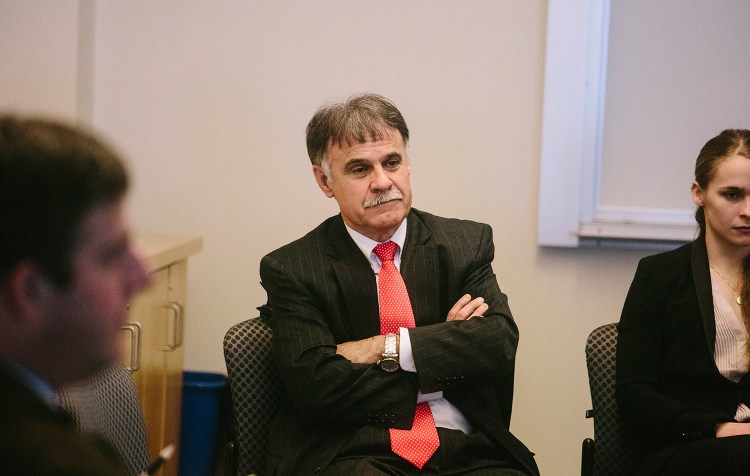A finalist to be president of the University of Southern Maine said Thursday that he would prioritize enrollment and fundraising to stabilize the struggling campus.
“Recruitment is job one,” Jose Sartarelli told a small group of students during his on-campus visit. “I would love to be the next president of USM and take this university to a different level.”
Sartarelli, chief global officer and dean of the business school at West Virginia University, is one of three finalists. The others are Glenn Cummings, interim president of the University of Maine at Augusta, and Harvey Kesselman, provost and executive vice president at Richard Stockton College of New Jersey. Cummings and Kesselman will visit next week.
Sartarelli said he would focus on boosting enrollment, especially of out-of-state students, who pay higher tuition, and increasing fundraising, particularly from alumni.
“This is an all-hands-on-deck situation,” he said, adding that USM faces “a perfect storm” of fixed tuition, declining enrollment and rising costs.
“If those things can’t be resolved, we have a big problem,” he said. “The system is broken.”
Years of multimillion-dollar budget deficits have roiled the campus; officials cut 50 faculty positions and five academic programs last year to close a $16 million gap in the school’s $134 million budget for the fiscal year ending June 30, 2015.
“My concern as a student is the idea that cutting is going to fix our deficit, because it’s not,” said Benn Marine, a junior at USM who is a political science and economics double major.
Sartarelli said he would look to increase revenue but cuts are sometimes necessary in a financial crisis.
Sartarelli, who was a senior-level executive at several multinational pharmaceutical companies before joining West Virginia University in 2010, said he has been successful at fundraising and attracting more students to West Virginia.
He noted that he’s been involved in West Virginia’s current $1 billion campaign, which has already raised $750 million.
At USM, “activity in fundraising has been minimal or nonexistent,” he said. “That’s crazy. Why aren’t we doing that?”
To attract donors, he said, “you have to have a vision and you have to share that vision. You have to get them to believe again.”
The new president will be the university’s fourth in four years.
USM now has an interim president, David Flanagan, who was appointed in July to replace Theodora Kalikow, a longtime president at the University of Maine System’s Farmington campus, who stepped down after a contentious two years as USM’s interim president.
In a meeting with faculty members, Sartarelli said he would work with the faculty, have an open-door policy and meet with teachers regularly. On academic matters, he said he would defer to the provost.
He was also asked about recent streamlining at the UMaine System campuses, such as consolidating some back office functions. He said he supports that for departments like purchasing and information technology, but would not want USM’s chief financial officer reporting to the system office, as the trustees have proposed.
“It would not work. If that is the case, then I would not come here,” he said.
The trustees will vote on that proposal in March.
“I don’t know how this system is going to evolve,” he told the faculty members. “If I come in with my hands tied behind my back and can’t make decisions, I’m not interested.”
“The emphasis on faculty participation and the globalizing of USM is important and I respect him for saying a president can’t operate without control of the budget,” said associate English professor Lucinda Cole, director of the women and gender studies program.
The new president is expected to take office this summer. The chancellor will make the selection, subject to approval by the system’s trustees.
“I think we’ve got three strong candidates,” said physics professor and Faculty Senate Chairman Jerry LaSala, who was on the search committee.
Send questions/comments to the editors.




Comments are no longer available on this story